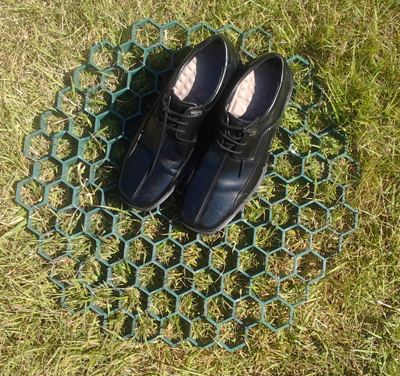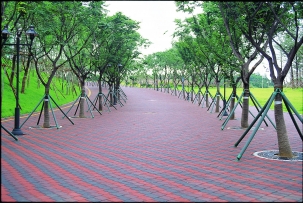조경가 ‘데이빗 앤셀미’와의 대담
국가도시공원 조성의 성공적 모델 Downsview Park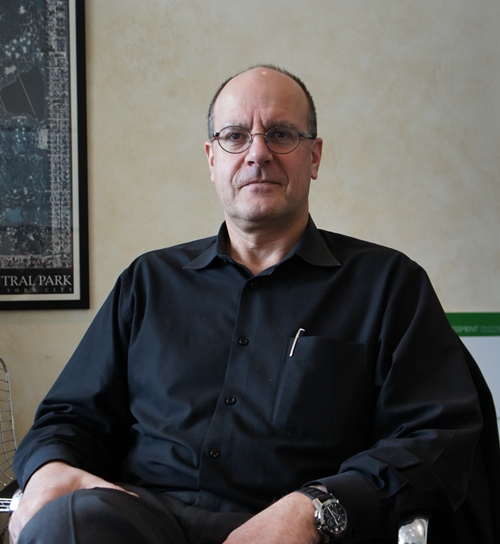
Q. 실무와 교육으로부터 다운스뷰공원의 조성을 총괄하는 책임을 맡기까지 과정을 말씀해 주시겠습니까?
A. 대학을 졸업하고 나서 곧 소규모 설계회사에서 일을 시작했고, 결국에는 다른 파트너 두 명과 함께 회사를 인수하고 운영하게 됐습니다. 약 15년 정도 경력을 쌓았고, 8년간 토론토대학 조경학과에서 학생들을 가르쳤습니다.
1996년부터 1998년까지는 온타리오주 조경사협회 회장직을 맡아 봉사하는데 많은 시간을 썼습니다. 2000년부터 3년 정도 멀티미디어 업체의 임원으로, 박물관이나 과학센터 등에서 쓰이는 교육용 디스플레이자료를 만드는 일을 했습니다. 현장에 시설을 디자인하고 설치하느라 잦은 출장을 다니곤 했는데, 조경설계와 전혀 다른 분야를 맛본다는 점에서 무척 소중한 시간이었습니다.
2003년은 다운스뷰공원이 공모전 이후 약 3년간의 휴지기간을 마치고, 본격적으로 시동을 걸던 시기였죠. 저 또한 공모전에 참여했었습니다. 탄탄한 팀이었고, 꽤 훌륭한 안을 내었다고 생각합니다만, 안타깝게도 최종 결선작에 들지 못했습니다. 최선을 다해 일한 후에 느끼는 기쁨과 만족, 그러나 그 후에 찾아온 실망이라는 반복이 설계업의 일부분이라는 사실이 너무도 받아들이기 힘들었습니다. 더 이상 조경을 해야 할 별다른 이유를 찾지 못했고, 3년간 떠나있었습니다.
2003년에 동료 한 사람으로부터 지금 현 직책에 대한 제안을 받게 됐고, 후보군에 올랐고, 이제 막 탄력을 받기 시작한 다운스뷰공원 국영회사에 합류했습니다. 저의 실무경험과 교육경험, 그리고 멀티미디어 산업에서 얻은 최신 지식들을 결합해 조직을 관리하고, 개념에만 머물러 있는 프로젝트를 현실적 여건을 고려해 실현시키는 일은 또 하나의 좋은 기회였습니다. 그 후 약 10여 년간 이 일을 하고 있고, 개인적으로 더 할 나위 없이 만족스럽게 평가하고 있습니다. 제가 기대했던 바에 못 미치는 부분도 있으나, 회사 경영의 전반적인 부분을 경험하고, 도시 오픈스페이스 조성의 정치적 영역을 잘 이해하게 됐으며, 디자인과 계획, 시공 분야에까지 총체적인 시야를 갖게 된 점 등으로 미루어 볼 때, 정말 멋진 임무입니다.
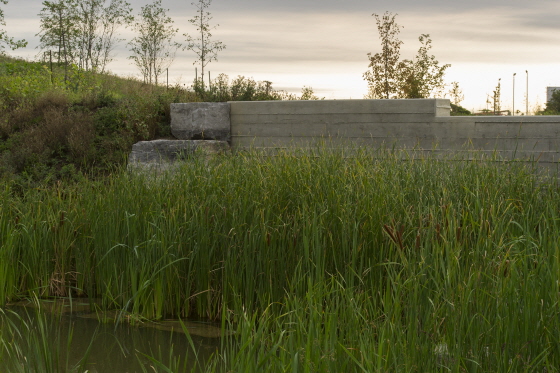
Cattail Marsh Habitat Area 습지식물 정화 서식처
©Downsview Park
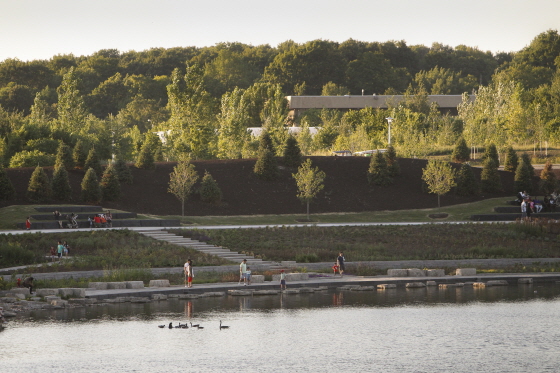
Lakefront Walkway 호수변 산책로
©Downsview Park

©Downsview Park
Q. 2000년 6월 당선자 발표 후, 당선팀과 주최측 사이에 갈등이 있었다고 알고 있습니다.
A. 실제로는 큰 불화라고 볼 수는 없구요. 당선자 대표인 네덜란드의 렘쿨하스 입장에서는 프로젝트가 현실화되는 속도가 무척 느렸나봅니다. 기다리다 지친거죠. 수개월간 많은 인력과 투자를 통해 제출안을 만들었는데, 공모전 후 모든 일이 갑자기 조용해졌으니까요. 정치계에서도 아직 의견이 분분했고, 예산도 확보되지 않았으며, 프로젝트를 스케줄에 의거해 가동할 수 있는 역량이 부재했으니까요. 제가 그 과정을 직접 지켜보지 않아 모르겠지만, 렘쿨하스는 더 크고 좋은 프로젝트를 갖게 되어, 팀 멤버인 브루스 마우에게 당선작 트리시티의 후속과정을 실행할 수 있는 권한을 일임했다고 들었습니다. 그래서 실제로 프로젝트를 수행하기 위한 트리시티주식회사가 설립되었고요. 2002년에 이 회사와 주최 측 간에, 당선작에 기반한 예비개념안(preliminary concept)을 작성하는 계약절차가 진행됐고, 저는 그 서명 시점에 임명되었습니다. 따라서 저는 감독 책임자이지만, 계약의 내용을 조정할 수 있는 기회는 갖지 못했고, 브루스 마우 또한 저의 존재는 계약 협상 당시에 예상치 못한 것이었죠. 하지만 계약과 동시에 프로젝트의 가장 초기시점부터 함께 일했습니다. 여기까지가, 대략 제가 현재 직책을 맡게 된 과정이라고 하겠습니다.
직접 공모전에 참여했기 때문에 프로젝트, 부지의 상태, 정부의 목적 등에 대해서도 약간의 예비지식이 있었습니다. 그러나 막상 제가 처음 맡게 된 일은, 당선팀인 브루스 마우와 같이 앉아서 개념안을 발전시키는 작업이었습니다. 그것만 1년 반이 걸렸습니다. 당선작이 무척 아름다운 안이긴 했지만, 지극히 추상적이고 지극히 개념적인 것이라, 그것을 조금 더 구체적으로 예산에 맞춰 시공할 수 있는 수준으로 발전시키기까지 상당한 노력이 필요했습니다. 3~4년이 지났음에도 여전히 매우 기초적인 수준에 머물러있었죠. 원래 부지에 와 보셨는지 모르겠습니다만, 그냥 텅 비어있는 군사기지에 불과했습니다. 인프라스트럭처와 지형을 정리하고 다듬는데, 그리고 공원의 뼈대를 구축하는데 3천만 달러를 사용했다고 보시면 됩니다. 지금은 부지 내에 커뮤니티를 개발하는 부동산 전략을 수립하는데 전력하고 있고, 아직 초기단계이긴 하지만, 상당히 멋진 안입니다.
Q. 공원 개발 자금을 국민의 세금이 아닌 사적영역의 부동산 개발에 의해 충당한다는 의미인데요, 이 방침은 다운스뷰 연례보고서에서도 누차 천명되고 있습니다.
A. 예, 이러한 방식은 공원을 개발하는데 있어 흥미로운 방법임에 틀림없습니다. 여러가지 어려운 점이 많죠. 저희가 내린 전략적 결정은 우선 공적 공간, 즉 공원 부분을 먼저 개발해서 주변 부동산 개발을 추동하자는 것이었습니다. 자본을 빌려 공사를 진행하는 동안 지속적인 수입원을 구축해 차차 되갚는 방식이죠. 그 덕에 상당한 빚을 지게 되었지만, 곧 부동산 개발이 시작되면 토지 매각으로 수입이 발생할 것을 예상했었고, 현실적으로 볼 때, 가장 좋은 방법은 많은 빚을 지더라도 일단 시작하고 보는 방법이었습니다. 중앙정부와 의회에서 충분한 예산을 확보해주기를 기다리다보면 프로젝트는 언제 좌초될지 모릅니다. 국민들에게 여기에 어떤 일이 돌아가고 있음을 알리고, 인식하게 하는 것이 중요합니다. 프로젝트의 현실화 자체에 대해 회의를 갖게 되면, 프로젝트는 영영 멀어질지도 모릅니다. 따라서 전략적으로 최대한 가능한 범위에서, 대상지의 절반을 차지하는 중앙에 위치한 공원의 큰 틀을 잡는 공사를 서둘러야 했습니다. 그 다음으로 주변의 개발부지에 대해서 부동산개발에서 얻어지는 수익으로 채무를 갚아나가야죠. 또한 현재 스포츠 시설이나, 오락산업, 임대업 등을 통해 일정 수준의 예산이 확보됩니다. 이 두 가지가 병행되면서 재정적으로 지속가능성을 확보할 수 있습니다.
Q. 브루스 마우의 사무실은 아직 설계에 참여하고 있나요?
A. 아닙니다. 예비 마스터플랜 이후, 계약이 종료되었습니다. 개념계획단계 이후 단순히 그 역할이 종료된 거죠. 이제 실제로 어디서부터 공사를 시작할까를 정하는 과정으로 넘어가야 하는데, 엔지니어링과 조경, 도시계획, 생물학 등을 아우르면서 전체적인 디자인 방향을 실현해나갈 수 있는 역량을 지닌 종합 업체를 찾기 시작했습니다. 무슨 이유에선지 모르겠지만, 브루스 마우의 사무실은 이후 어떤 컨소시엄에도 참여하지 않았으므로, 프로젝트를 지속해나갈 수 있는 지위가 없어졌습니다. 공모전에 당선되었고, 개념계획을 입안했다 해서 영원히 그 프로젝트에 대한 권리가 주어지는 것은 아니지요. 저희는 자유경쟁을 통해서 각 하위 프로젝트마다 다른 팀을 선발하였고, 따라서 여러 회사들이 각기 맡은 부분을 해나가고 있습니다. 이것이 바람직한 방향입니다. 시간이 상황이 변함에도 불구하고, 원래 팀에 일을 계속 맡길 수는 없습니다. 브루스 마우의 사무실은 그 임무를 훌륭히 수행해주었고, 모든 작업의 토대가 되었습니다. 모든 하위 프로젝트가 여전히 개념계획안을 참고하고 있고, 당선자가 제시했던 방향이나 그 시사점은 여전히 현재의 작업에 녹아있습니다. 다만, 평면적인 계획을 입체적인 공사로 옮기는 과정에서 모든 요소들이 적합한 크기와 비례를 준수해야 하고, 향후 발생할 관리적 차원의 문제들에 대응해야 합니다. 그러니 당연스럽게도 지금 실제 시공되고 있는 공원은 십수년 전에 표현되어진 개념들과 정확히 일치할 수는 없죠. 그러나 저는 당선작의 정신과 의도는 현재의 변형된 계획안에 잘 살아있다고 확신합니다.
Q. 사람들이 브루스 마우의 거대한 조각적 시설물에 대해서 농담하는 것을 들었습니다.
A. 예비개념안에서 그러한 요소들이 많았습니다. 브루스 마우는 공원을 즐겁게 만들 여러가지 요소와 설치물들에 대해 얘기하곤 했습니다만, 저희가 그것들을 모두 다 제작했을까요? 당연히 아닙니다. 저희는 그 시대와 시기의 요구에 맞는 요소들만을 선별해 제작할 것입니다. 2003년도에 그가 언급한 것들이 그대로 지어질 필요는 없습니다. 2013년이나 2015년의 상황에 맞게 응용되어야지요. 주변 지역사회의 의견, 일정 기간 공원을 이용해 본 사람들의 의견도 반영해야 합니다. 사람들이 진정 무엇을 원하고 필요로 하는지, 예산이 허용하는 범위인지, 그 시대의 조경이 용인하는 수준인지를 긴밀히 파악해야 합니다. 그것이 우리가 어떻게 다운스뷰를 지어나갈 것인지에 대한 신호입니다. 브루스 마우가 전달하려 했던 정신은 변함이 없습니다. 그것이 어떻게 물리적 형태로 반영될 것인지에 대한 결정은 우리 모두가 공동으로 결정해야 할 사항입니다. 저는 운이 좋게도, 그러한 결정을 하는 팀의 주장 역할을 해왔습니다. 2003년에 제시된 어떤 것을 실현해야 하느냐 마느냐의 질문보다는, 어떻게 2013년으로 해석하느냐 하는 것이 우리에게 주어진 합당한 질문이고 과제입니다.
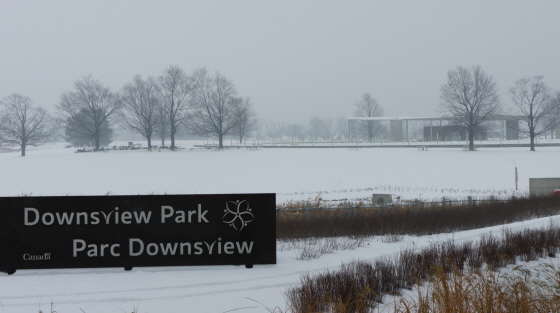
©최이규
Q. 다운스뷰공원회사에 대해 설명해주시겠습니까? 한국에서는 정부가 이러한 일들을 하고 있기 때문에 흥미롭습니다.
A. 다운스뷰공원회사는 일종의 정부기관이라 볼 수 있으나, 실제로 그렇지는 않습니다. 저희는 공무원이 아니고, 다만 중앙정부에 의해 권한을 위임받은 조직입니다. 캐나다에서는 Crown Corporation - 캐나다의 공기업 형태로, 방송국 CBC, 항공사 Air Canada, 우편서비스 Canada Post 등이 대표적이며, 국민의 세금으로 운영된다. 그러나 다운스뷰공원회사는 세금의 투입 없이 100% 자족적으로 운영된다는 측면에서 약간 구분된다.- 이라고 불립니다. 저희는 독자적인 운영규정을 가지고 있고, 자체적으로 선출하는 사장과 고위관리직 구조를 가지고 있습니다. 그러므로 자체 규정들에 의해 독자적으로 어떻게 비지니스를 운영해 나갈지를 결정하고, 이사회에 보고하며, 자체적인 회계보고서를 발간합니다. 대중들이 보기에는 정부기관처럼 보일 것이나, 사실 저희는 정부와 연계되어 있으나, 일정한 거리를 두고 있습니다. 따라서 정부 부처의 일부분은 아닙니다.
Q. 저도 2004년 즈음에 이곳에 와 본 적이 있습니다. 제가 기억하는 건물들이 거의 그대로 있는 듯합니다. 공모전 이전은 어떠했습니까?
A. 1996년 기준으로 약 14~15동 정도가 있었고, 지금 남아있는 것은 10동입니다. 그리고 건물 연면적은 약 17만㎡정도 됩니다. 그 후 4~5년간 몇몇 건물들이 철거되었고요. 저희가 통제권을 얻은 후로는, 소규모 건물 두 개가 추가로 철거됐습니다. 그러나 나머지 건물들에 대해서는 대부분 보존하며, 향후 이 건물들이 장기적 계획의 일부분이 될 수 있는 여지를 남겨두고 있습니다. 지금 현재 거의 모든 건물들을 민간에 임대하여, 고정 수입원으로 삼고 있으며, 철로 건너편에 위치하는 격납고 건물은 실내 스포츠와 오락을 위한 장소로 사용하고 있습니다.
Q. 거대한 창고건물 ‘No. 1 Supply Depot’에 위치한 필름 스튜디오와 마켓은 사용되나요?
A. 저희는 그 건물과 주변의 개발부지에 대한 장기적 비전을 지금 준비하고 있습니다. 이곳은 최종적으로 약 1000세대의 주거지와 함께 9만㎡ 정도의 상업 지역으로 개발될 것입니다. 아직까지도 이 건물을 철거해야 하는지, 아니면 그대로 존치해야 하는지에 대한 결정이 이루어지지 않았습니다. 여전히 여러 변수를 고려하며 탐색중입니다. 그러므로 영화세트장이나 마켓과 같이 임시로 사용하고 있는 것이지요.
Q. 그렇다면 철거될 수도 있다는 말씀이시군요.
A. 예 그렇죠. 다만, 그 옵션이 가장 유리하다고 판단될 때입니다. 경제성, 그리고 전체적인 도시설계의 관점에서 볼 때, 옳다고 판단될 때는 철거할 수 있습니다. 보존하거나 새로운 용도로 재사용하는 것이 더 타당하다고 판단될 때에는 또 그렇게 할 것입니다. 그러나 10년이 지난 지금까지도 아직 결정하지 못했고, 이제 그 판단을 내리려 준비하고 있습니다. 토론토의 컨설팅회사인 어반 스트레터지스와 부동산 개발회사이자, 저희의 자문역할을 하고 있는 쿠쉬먼 웨이크필드와 협력하여, 몇 가지 시나리오를 준비하고 있습니다. 현재 다운스뷰 부지 내 5곳의 개발지역 중, 진행이 된 곳은 남쪽구역 밖에 없습니다. 거대 창고가 있는 쉐퍼드 지역이 유일하게 건물이 남아있는 지역이구요, 베이커에 오랫동안 비어있는 작은 군 관사 건물 몇 채가 있습니다만, 조만간 철거될 것입니다. 그 외 다운스뷰의 주요한 산업 시대의 역사 건물들은 모두 스포츠나 문화 지역에 위치하고 있습니다. 모두 공장, 비행기 격납고, 군사용 사무동으로 쓰이던 것들입니다. 현재 모든 건물들은 임대 중이거나, 저희가 사용하고 있습니다. 쉐퍼드 지역에 새로운 지하철(TTC)역 건설이 2015년 마무리되고, 현재 부지를 관통하는 GO트레인(외곽 통근열차)와 연결되면 정말 멋진 주상복합개발 지역이 될 것입니다. 시나리오 중 하나는 이 거대한 창고 건물을 여섯 부분으로 쪼개어서 그 사이를 도시의 거리처럼 조성하는 것입니다. 구조적으로는 문제가 없습니다. 또 하나의 큰 빌딩보다는 작은 빌딩들이 집합된 모습이 보다 풍부한 도시성을 창출할 수 있다는 판단 때문입니다.
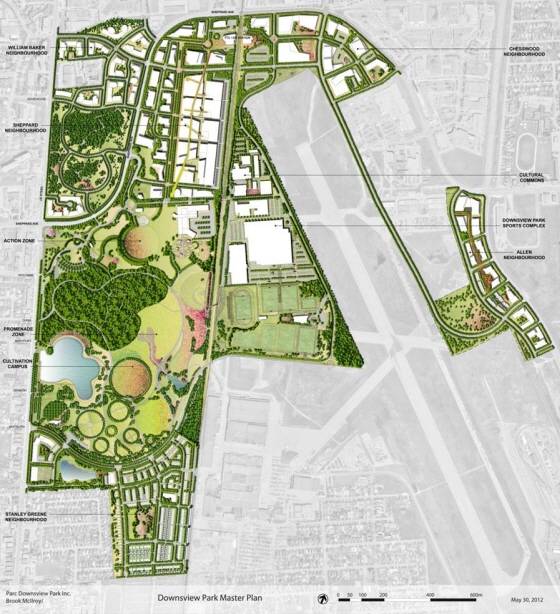
©Downsview Park
Q. 대부분의 중대형 건물들을 보존해서 임시 임대용으로 사용하고 있는데, 철거와 보존 중 어느 비용이 더 많이 들었습니까?
A. 건물을 보존하는 데에 상당한 비용이 들었습니다. 대부분 항공기 조립을 위한 시설이었기 때문에, 오래된 공장 건물 같은 것입니다. 난방과 전기시설을 새로 했고, 유리창 또한 교체되어야 했습니다. 방치된 상태였기 때문에 지붕의 상태도 형편없었습니다. 이 건물들을 물려받기 전 20년 동안 제대로 관리되지 못했기 때문에, 건물들을 복원해서 사용 가능한 상태로 되돌리는 작업에 매우 큰 비용이 소요됐습니다. 그러나 보존이냐 철거냐를 결정하는데 중요한 것은 개별 건물들의 구체적인 상태입니다.
예를 들어, 81,000㎡에 달하는 1번창고의 경우 매우 튼튼한 콘크리트 건물이기 때문에 오히려 철거하는 비용이 더 클 것입니다. 또한 철거비용 또한 향후 건물을 어떻게 사용할 것인지에 대한 고려 요인이 됩니다. 이 건물의 최종 용도가 결정되지 않았기 때문에 외형적인 상태를 개선하는데 큰 투자를 하지 않았습니다. 지금 다운스뷰에서 최종 용도가 결정되어 보수 자금이 투입된 건물은 현재 스포츠센터로 사용되고 있는 격납고뿐입니다. 현재 센터니얼대학과 몇몇 건물의 임대 건을 협상하고 있습니다. 그렇게 되면, 대학 쪽에서 자체적인 필요에 맞게 건물을 수리하고 개선하게 될 것입니다. 경기장 건물은 절반 정도 완성됐습니다. 격납고 주변으로 스포츠·오락 시설을 집중시킴으로써 하나의 컴플렉스를 형성하고자 하는 의도입니다.
Q. 봄바디어 항공회사와 활주로는 여전히 사용되고 있습니까?
A. 그렇습니다. 공장 건물과 2km의 활주로가 운영되고 있습니다. 일주일에 약 50번 정도의 이착륙이니 그렇게 활발하게 사용되는 것은 아닙니다만, 공항의 기능은 유지될 것입니다. 상업 항공사는 아니고, 모두 개인 항공기들입니다. 센터니얼대학에서 저희 건물을 임대하려는 이유도 여기에 있습니다. 활주로라는 자원 때문에 항공기술 관련학과를 이곳으로 옮겨서 상승효과를 꾀한다는 것이지요. 저희도 이 구역을 항공우주 관련 교육, 연구, 산업을 위한 상업용지로 개발할 예정입니다. 상상해 보세요, 멋지지 않습니까?
Q. 제 기억에 공모전 작품 중, 활주로를 가로지르는 지하공간을 계획한 안들이 있었습니다.
A. 그랬었죠. 기술적으로도 가능하고, 다운스뷰공원이 보유한 토지이용권 덕에 법적으로도 하자가 없습니다. 그러나 비용이 문제입니다. 필수적인 것이라면 몰라도, 굳이 어마어마한 자본을 투자해 그렇게 할 유인이 부족합니다. 동측편이 국방부 소유 부지로 막혀있기 때문에 주위 도시망과의 원활한 연결도 어렵습니다. 모두가 자기 땅을 지키길 원하니까요. 따라서 전체적인 상황을 고려해 봤을 때, 합리적인 제안이라고 보기가 어렵습니다.
Q. 다운스뷰는 브라운필드 사이트로 알려져 있지요?
A. 그렇기도 하고, 아니기도 합니다. 군 기지로 사용되었으니, 브라운필드라 할 만합니다만 저희가 조사한 바로는 심각한 오염 사례가 없었기 때문에, 실제적으로는 브라운필드와 같은 상황이 아니죠. 국방부가 이전해 나갈 때, 철저한 이전 계획을 세웠고, 문제가 있는 지역에 대해서는 정화를 완료했습니다. 사실 그다지 오염된 지역이 없었습니다. 물론, 개발된 적이 없는 그린필드와 같은 상태는 아니었지요. 그럼, 브라운필드와 그린필드 사이라고 할 수 있겠네요. 하지만, 토양오염을 심각한 문제로 우려할 만한 부지는 아닙니다.
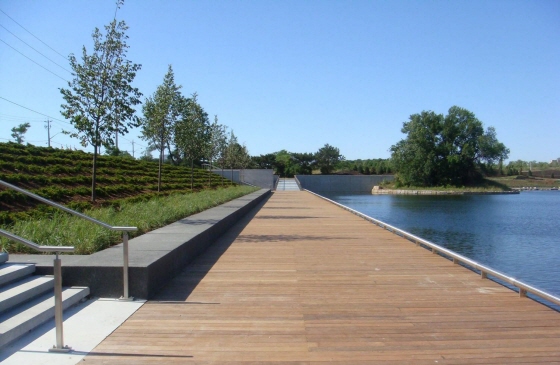
©Downsview Park
Q. 다운스뷰공원을 찾아오는 방문자들은 주로 어떻게 오나요? 제가 오늘 아침에 직접 걸어봤습니다만, 보행자에게 그리 친절한 상태는 아닌 듯하군요(웃음).
A. 아직까지는 그렇습니다. 상당수 방문자들이 현재 다운스뷰공원 동쪽에 위치한 지하철역이나, 버스를 이용해 공원으로 옵니다. 하지만 지하철역과 공원 사이의 거리가 있고, 고속도로로 단절돼있어서 버스가 운행되고 있습니다. 대중교통은 아직 불편한 상태이고, 그래서 대부분의 사람들은 자가용을 이용하고 있습니다. 현재 공원이용객의 대부분은 스포츠시설 사용자이기 때문에 차를 타고 와서 격납고 주위에 주차하는 형태입니다. 이곳에 있는 직장으로 출퇴근하는 사람도 있고요. 우리 회사에서 일하는 사람들, 그 정도가 전부라고 할 수 있습니다. 그러니 대부분 자가운전이고요,
지적하신 것처럼 보행자 위주의 환경은 아닙니다. 하지만 아직 쉐퍼드 지역에 대한 본격적 사업이 시작되기 전이라 그렇습니다. 새로운 건물이 들어서고, 1번창고의 재사용 계획이 확정되어, 도로와 시설이 정비되면 보행자를 위한 곳으로 탈바꿈할 것입니다. 그러나 저희는 개발용지에 대한 도시계획이 먼저 완성되기 전에는 현존하는 상태를 개선하기 위한 아무런 투자도 하지 않을 것입니다. 진입부의 상황은 그렇습니다만, 일단 공원 내부로 들어서고 나면 아무런 관통도로가 없기 때문에 보행만이 유일한 선택입니다. 공원 안으로 차를 운전해서 주차할 수는 없고, 자동차는 모두 외곽에서 이루어진 후 보행으로 접근한다는 것이 저희가 세운 원칙입니다. 다만 대부분의 대형 공연행사가 이루어지는 액션존에는 지정된 주차장이 마련되어 있습니다. 쉐퍼드 지역이 개발되고 나면 이러한 진입 패턴 또한 바뀔 것입니다.
지하철역에서 나온 사람들은 리모델링된 1번창고를 관통해서 공원으로 진입하게 되는데 날씨가 좋으면 건물을 에둘러서 올 것이고, 날씨가 춥거나 흐린 날이면 건물 내부를 통해서 움직일 것입니다.
Q. 호수를 새로 조성한 목적은 무엇입니까?
A. 빗물관리 때문입니다. 저희가 공사를 시작하기 전에는 다운스뷰공원과 인근 부지 모든 지역의 빗물이 동쪽에서 서쪽으로 파이프를 통해서 킬스트릿쪽으로 배수되었습니다. 부지 전체에 파이프망이 쫙 깔려있었죠. 저희 전략은 이 지하파이프를 외부로 드러내어 지상화시키고, 자연적 생태수로와 연못을 만드는 것이었습니다. 빗물이 공원의 서측 경계인 킬스트릿을 만나면 지하수로를 통해서 블랙크릭으로 이송되게 됩니다. 공원 외부에 대해서는 아직 변화된 것이 없습니다. 생태수로와 호수는 빗물이 부지를 빠져나가기 전 모든 오염물질을 침하시키는 역할을 합니다. 최종 방류구는 기존 시설을 그대로 사용하고 있고요, 호수와 모든 수로는 빗물을 외기와 햇빛에 노출시켜 정화하는 역할을 합니다. 홍수도 완화되고, 보다 깨끗한 물이 되는 동시에, 공원의 멋진 시각적 구성요소가 됩니다. 호수를 만들기 위해 파낸 50만㎥의 흙은 둔덕을 조성하는데 사용했습니다. 기존 부지는 매우 평평한 상태였는데, 지금은 철로변으로 재미있는 언덕들이 늘어서 있습니다.
Q. 가장 큰 언덕은 매우 눈에 띕니다. 그 위에 올라서면 호수의 전경과 멀리 도심지까지도 보이겠군요.
A. 그렇죠. 아름다운 경치죠. 예전에는 다운스뷰라는 이름에도 불구하고, 이런 경관을 즐길 수 없었습니다. 멋지죠. 멀리 나이아가라 단층대와 CN타워, 토론토의 스카이라인을 조망할 수 있죠. 그러나 여기서 더 중요한 점은 호수와 둔덕들로 인해 기존에 없던 새로운 생태계가 만들어졌고, 이 모든 것이 새로운 흙의 반입과 반출없이 조성되었다는 사실입니다.
Q. 그런 공사에는 많은 비용이 들지 않습니까?
A. 맞습니다. 3년간에 걸쳐 3단계 공사를 진행했습니다. 마운드를 만드는데 40억 달러 정도 소요됐습니다. 지금 볼 수 있는 나무들은 대부분 새로 심은 것입니다. 아직 성목이 되진 않아서 우거지진 않습니다만 6만 그루 정도 심었습니다. 이벤트 공간은 두 번째 단계로 들어서고 있는 상태구요, 초지지역의 땅고르기는 완성됐습니다만, 나무는 없는 상황이고 남쪽에 과수원과 파빌리온은 완성되었는데, 꽤 잘 된 편입니다. 현재까지 기반조성공사에 사용된 예산은 공원 쪽과 건물 보수에 약 300억 달러 정도입니다.
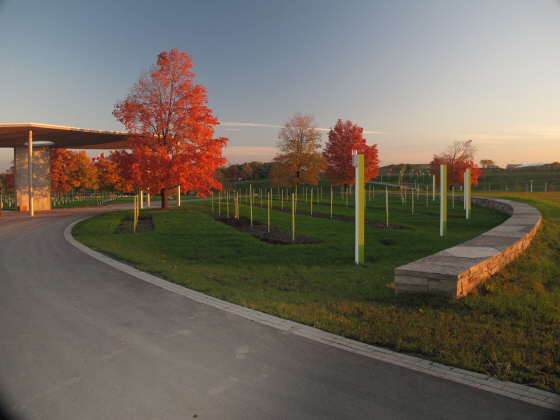
Orchard Fall 과수원 가을 풍경
©Downsview Park
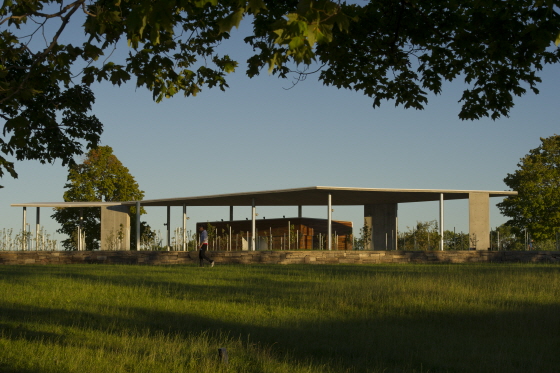
Orchard Area 과수원 지역
©Downsview Park
Q. 연간 관리예산은 어느 정도입니까?
A. 15억 달러 정도 소요됩니다. 충분치 않지만, 현실적으로 그렇습니다. 대부분의 부지가 아직 빈 땅이기 때문에 일단 개발사업이 시작되고 나면, 토지가 민간에 매각되거나, 우리가 계속 관리할 것인지가 결정될 것입니다. 현재로선, 남쪽의 스탠리그린 지역이 유일하게 매각된 곳입니다. 저희는 곧 다른 개발구역들에 대해서도 마스터플랜을 수립해서 세부사항을 결정하게 될 겁니다. 그러면 토지이용을 변경하겠지요. 하지만 주거용으로 지정된 스탠리그린을 제외하면 나머지 지역들의 용도는 확정된 것이 없습니다.
Q. 다운스뷰공원회사와 같은 민간전문가로 이루어진 자율적 법인이 정부기관보다 더 효율적으로 이렇게 거대한 도시사업을 수행할 수 있다고 보십니까?
A. 다운스뷰공원회사는 다운스뷰의 공원 및 주거·상업 지역들을 개발하는 임무를 수행하기 위해 특별히 설립된 공기업입니다. 따라서 처음부터 모든 조직이 거기에 최적화되어 만들어졌습니다. 따라서 거대 정부기관에 속하는 조직이 겪는, 다른 우선순위에 의해 집중력이 흐트러지는 문제점을 방지할 수 있습니다. 어려운 점도 있습니다만, 임무수행을 위한 우리의 주요 목표와 전략은 매우 뚜렷합니다.
Q. 다운스뷰공원 디자인 심사위원회의 역할은 무엇입니까?
A. 독립적인 심사위원회는 광범위한 디자인 및 개발 사업에서 저희를 돕고 있습니다. 가장 중요한 역할은 도시개발에 있어서 탁월한 디자인, 시대를 앞서가는 건축, 지속가능성, 그리고 혁신성을 보장하는 것입니다. 위원회는 조경, 건축, 도시계획, 도시설계, 그리고 지속가능성을 대표하는 인사로 구성돼 있습니다.
Q. 다운스뷰공원회사의 최고경영진은 민간부문과 기업활동에 경력이 화려하신 듯합니다. 강점은 무엇인가요?
A. 다양한 배경을 가진 임원 구성은 지난 몇 년간 큰 성과를 나타냈습니다. 최고경영진은 금융 전문가, 기획 및 사업계획 전문가, 그리고 행사운영 전문가 등으로 구성되어 있습니다. 조경가 출신의 경영진으로서 제가 기여하는 것은, 다운스뷰공원 및 개발지역에 대한 관점과 비전이 흔들리지 않도록 중심을 지켜나가는 것입니다.
Q. 다운스뷰공원이 기존의 전형적인 공원을 넘어서는 이유는 무엇이라고 생각하십니까?
A. 우선 토론토시 내부에 위치하면서도, 국가공원이라는 점이 이곳을 독특하게 만듭니다. 둘째, 공원이라는 공적영역에 대한 공공투자를 통해 주변지역에 대한 민간부문의 투자를 유인해낸다는 전략이 또한 다운스뷰를 독특하게 만듭니다. 그러나 결국 다운스뷰의 진정한 독특함은, 지역주민과 토론토 시민, 그리고 전 캐나다 국민 모두가 이 공원의 쓰임새와 형태를 결정하는데 실질적 기여를 행사할 때에만 성취될 것입니다.
Q. 좋은 디자인이란 무엇이라고 생각하십니까?
A. 다운스뷰공원의 경우로 말씀드리자면, 시각적으로 보기 좋다는 것과 더불어 공적 오픈스페이스로의 기능적인 면에 충실한 것이라 할 수 있습니다. 또한 대형 행사와 거대한 인원을 수용하는 동시에, 아무런 이벤트 없이도 소수의 사람들이 알차게 즐길 수 있는 공원이라 생각합니다.
공원에 존재하는 자연의 체계, 즉 물과 숲, 이런 것들을 과장과 여과없이 솔직담백하게 보여주는 것이 좋은 디자인일 것이며, 건축에 있어서는 억지스런 역사적 모티브를 도입하지 않으면서, 간결하고도 주위 경관에 잘 들어맞는 건물이 좋은 디자인이라 생각합니다.
※캐나다의 공기업 체계를 이해하는데 큰 도움을 주신 한국투자증권 이철호 애널리스트와 서울대 경영대학 박사과정의 김석영 회계사께 감사드립니다.

Tree ID Stakes in orchard 과수원의 수종 표시목
©Downsview Park
David Anselmi
Q. Could you first summarize your career and the transition from teaching to Downsview Park? I know you were a faculty member at the University of Toronto.
A. Once I graduated from college and University I was working for a small firm that ultimately morphed into my own practice with two partners. I was part of that practice for about fifteen years. During that time I was also teaching at the University of Toronto, from 1990 to 1997 and I was president of the Ontario Association of Landscape Architects as well from 1996 to 1998, which was a volunteer thing, but time consuming. I left my practice in 2000 and I worked for a multimedia company for a little under 3years developing a digital product for the display of educational information for museums and science centers around the world. I traveled quite a bit negotiating contracts and designing facilities, which was a fantastic opportunity for me to do something completely different. Just at the tail end of that, in 2003 the Downsview Park project, was starting to gain traction after a brief hiatus from the competition that was awarded in 2000. Back in 1999, 2000 my firm, led by myself, put together what we thought was a very good team, and what we thought was a good competition entry I that unfortunately was not shortlisted. The hard work, excitement and then absolute disappointment seemed like such an odd part of the profession. I left for two and a half years. This position came up and a colleague contacted me and asked me if I would be interested in putting my name in the hat, as the project was starting to get momentum again. It sounded to me like a good opportunity to combine experience as a Landscape Architect from my private practice and teaching and my more recent experience as part of an executive management team into one overall management and project delivery type position which I’ve now been doing since 2003, so ten years. And I have to say it’s been fantastic. It’s not been what I expected specifically but it’s been fantastic. I’ve seen every aspect of the business side, every aspect of the political side, and luckily, every aspect of the design, planning and construction side as well. It’s been fantastic.
Q. In 2003, the competition was already over and there were some arguments between…
A. There was no real breakup, really. I think what happened, quite frankly, is Rem Koolhaas got tired of waiting for the project to become a real project. He and Bruce Mau studio spent several months and I’m sure many thousands of dollars putting together their competition winning scheme and then it almost immediately went quiet and it was because the politics hadn’t been sorted out and the budget hadn’t been sorted out and the means to deliver the project in a timely manner hadn’t been sorted out. I think he just got tired of waiting. I wasn’t here so I don’t really know what happened, but everything I’ve heard and everything I’ve read is that he went on to bigger and better things and had an agreement with Bruce Mau that if he was interested, he could go ahead and carry on with the project, so he did under the moniker of Tree City. They set up a company called Tree City Inc. to deliver the project. In 2002 they started to negotiate a next stage contract to deliver a preliminary concept based on the competition winning piece. In 2003, I was brought on just as that contract was being signed. That was my introduction to my position here. I knew all about the project because of my competition entry so I had a pretty good understanding about the property and the context in which the park was to be designed and built including the ambitions of the Federal government, but my first introduction to the actual job was sitting down with Bruce and his team to start their process to develop a conceptual plan. We did that over the course of a year, year and a half, then moved them into a slightly more detailed scheme. Their competition entry was quite visionary, very strategic and beautiful in a lot of ways but also very abstract and very conceptual, so the biggest job was turning that abstract idea into something that could be detailed, budgeted and built. We’re still in the early stages of building much of it. I don’t know if you know what the property was like before, but it was very much a vacant military base in 2000. We’ve spent $30 million doing infrastructure and topographic changes and all kinds of things that have set the framework for the park. We’re also now onto our real estate development strategy where we are starting to build communities around the park. It’s all early days still but very exciting.
Q. So, private real estate development to fund the park development. Your annual reports say that Downsview Park doesn’t use any taxpayer dollars.
A. It’s an interesting way to deliver public space, for sure. It’s been difficult in a lot of ways. We made a strategic decision to commence building the park… the public realm first as a way to galvanize real estate develop interest, and we have gone into debt to do this, knowing that significant revenue was available as development kicked in. For us, the only way to get started was to actually get started. We couldn’t wait for all of the necessary money to come and then build. We needed to start building because people simply wouldn’t believe that it was ever going to happen otherwise. So the strategy was to build as much of the park as possible to get a framework built, start to develop the real estate around it and then start paying down the debt. We also have an ongoing revenue stream here by virtue of sports and entertainment businesses and leasing of buildings. So that, in combination with the larger real estate transactions is going to make for a sustainable financial situation.
Q. So, is Bruce Mau’s office still involved?
A. No, they are no longer involved. Once they delivered their preliminary master plan, their contract was over. They weren’t fired, their contract was simply over. We went through a process of defining what the first actual construction project was going to be and went out to the market for multidisciplinary firms: engineering, landscape architecture, planning, and biology, to get a comprehensive design team, so we could build something. It was never the intent that Tree City was always going to get the work, nor was it our intent to exclude Tree City from future work. We’ve had multiple projects out to the market since and they’ve been undertaken by any number of different firms, which is the way you should do it. We had a great relationship with Bruce’s studio. The work they did, I still believe is terrific and I still think is the starting point for everything that we’ve done here. We still refer back to their concept on every new project that goes out. Certainly the spirit of what he was saying is imbedded in what we’ve done. The fact is, whatever is being built now, is 3 dimensional it’s not 2 dimensional. It’s got proper scale and proportion, form and materiality and it’s got all kinds of maintenance issues attached to it so what we’re building is different than what was perhaps on that competition submission in 1999, 2000. But I firmly believe the spirit of what Bruce Mau and Tree City were talking about is alive and well in the Park.
Q. I’ve read that some people actually make jokes about Bruce Mau’s proposals like the huge sculptural swings…
A. I don’t know about any jokes specifically, but yes, he had some of those in his preliminary concept plans, which I believe have been taken out of context. He talked about a bunch of different elements and objects that would begin to animate the park. Have we built all of those? We’ll build what’s appropriate for the time. It isn’t that everything that he said in 2000 must be built; it’s the idea of what he was saying in 2000 and again in 2003 translated to 2013 or 2015 or whenever we build things. We have to take a reading from the local community; we have to take a reading from the people who have been using the park, what they need, what they want, where our budgets stand, what’s going on in the world in landscape architecture. Those are our real cues. That’s how we’re going to build this thing. The spirit of what he said is intact. How it’s all manifest at the end of the day, I think that’s a decision by a bunch of us. I’m fortunate to be in a position to at least quarterback the teams that are doing that, but we’re not saying that you must build this because in 2003 that’s what Bruce Mau said. We’re saying in 2003, this is what Bruce Mau said, let’s translate that to 2013. I think that’s the only way to do it.
Q. Can you explain more about your organization? In Korea, mostly government agencies do this kind of job. For me, it’s a new idea.
A. So we’re kind of a government agency but not really. We’re not federal government employees but we are mandated by the federal government and in Canada, it’s referred to as a crown corporation. An arm’s length company means you’re attached to the government but you’re out there. We have our own operating protocols; we have our own president; we have our own senior staff; we have our own rules and regulations as to how to conduct our business; we report to a board; we have our own financial statements; all that, but we basically answer on behalf of the government. We’re seen by the public as basically the federal government but we’re at arm’s length, we’re attached but distantly. It’s sort of like a government agency running this project but it’s not a department of the government.
Q. I graduated from the landscape program at U of T so I was here in 2004 and I think most of the buildings are still here. do you know how many buildings there were before the competition?
A. There were probably 14 or 15 buildings and now there are 10 totaling 1.8 million square feet right now. There were more buildings back in 1996. In 1996~2000 some buildings were taken down. We’ve taken down two small buildings, but otherwise we’ve kept everything so that we have a chance to figure out if they fit within our long term plan. And right now we’re using them all for short term tenants including for indoor sports and recreation.
Q. Are the Film studio and market open year round?
A. Yes, they are. We’re just going through a process right now to understand the long-term strategy for that building and the neighborhood that it sits in. It is ultimately going to be developed for about 1000 residential units and potentially another million square feet for commercial space. Whether that big building stays there or not is still to be determined. We’re still trying to figure that out now. So in the meantime there are short term tenants. The film studios and the market are short term tenants.
Q. So they may be demolished in the future?
A. It’s possible if that seems to be the most advantageous thing to do, financially and from an urban design perspective. If it makes more sense to keep the building up and repurpose it for a new use, that’s what we’ll do. But we haven’t made that decision yet, we’re just starting that process now. Urban Strategies and Cushman Wakefield as our real estate advisor are working with us on that neighborhood now to come up with some scenarios. Out of five neighborhoods, one is already starting development - the south. The others are William Baker, Sheppard, Chesswood and Allen. So there are four more. All of those are in early stages of detailed development scenarios. And the Sheppard neighborhood is the only one with buildings on it, other than some small military housing on Baker, which are vacant. All the other industrial buildings are part of the park and they’re in the sports and culture section of the park. Right now there is some military housing in William baker, that’s going away. TTC, the new subway, is being constructed right now. It’s connected to the GO line and the subway system downtown. This, of course will be fantastic for our future development plans.
Other buildings are all the industrial buildings, the old airplane hangars and office buildings. They’re all being used by us for sports and entertainment. This scheme suggests that the one big building should be divided up into smaller buildings. Structurally it’s possible. It says that smaller component buildings might create a better urban quality than one, big monolithic building.
Q. You have preserved most of the buildings for now at least for temporary use, is it really expensive to preserve or demolish them?
A. Well it’s been expensive to maintain because they’re all old buildings used for the manufacturing of aircraft primarily, so they were old industrial buildings. The heating and electrical needs to be redone, all the windows need to be replaced, the roofs were all in bad shape. They weren’t very well maintained over the last 20 years when we inherited them so they’ve been very expensive to bring up to a state of usability. However, it all depends on the specific situation of individual buildings. For example, the Supply Depot building at 872,000sq.ft, will be very expensive to demolish because it’s all concrete. The cost of demolishing it is going to be a factor in our decision making. We haven’t spent a lot of capital to make them into their final form because we don’t know what that’s going to be yet. There is a new building being constructed; an arena that’s about half-built right now. Again, that’s all just to capitalize on concentrating all the sports and recreation in one place.
Q. So Bombardier remains and the airfield is still in use?
A. Yes, it’s still active. Their plant and a 2km runway, probably 50 flights a week. So it’s not very active, but it’s definitely active. It’s for private use only, no commercial flights. Because the runway’s there, Centennial College is looking to move their aerospace technology program and we’re looking to develop this commercial land as an aerospace hub for teaching, research and industry involved in the aerospace technology industry. So that will be fantastic if that happens.
Q. I remember, in the competition entries, many people proposed an underground connection.
A. Yeah, it’s possible, technically and legally we have an easement to do it, but it’s too much money. The Department of National Defense still owns this land so we’d have to go under and then what? It simply doesn’t make sense.
Q. Is this basically a brownfield site?
A. Yes and no. It was never found to be overly contaminated. When the Department of National Defense moved and gave us the land, they did a full decommissioning study and any problem areas they cleaned up; there weren’t really any. It’s not really greenfield either because it wasn’t raw land, so something in between. But it was not a problem site.
Q. So how, for now, do people come here? I just walked around and it’s not really pedestrian friendly yet.
A. No, not yet. Many people come by TTC both by bus or subway. The subway station is connected by bus, so people come by transit, but lots still come by car. Our site is admittedly not pedestrian enough yet. Most of the regular programming and activity on site is centered around the hangar building for sports and recreation, and many of the users of these facilities drive to this destination. Some are coming to work at various places on site, some are coming for work at our office, and that’s it. So lots of driving, you’re right. But it’s primarily because we haven’t done any real estate development yet, we haven’t done any new buildings or new infrastructure. And we won’t really do that until we get the neighborhood plan figured out more comprehensively. When the adaptive reuse of Supply Depot is finished, it will be quite pedestrian oriented. Right now, there are no roads through the park. It’s all pedestrian; it’s all walkways and cycle paths so you can’t drive and park here; you can park on the edges and walk in. That’s the way we’re going to keep it. But you can definitely drive and park on the designated parking lot which people do. When the Sheppard project is built, it will change things a lot. That’s part of the reason why the plan for the renovation of Supply Depot looks fragmented. People will get out of the subway and the connection to the park is through this building, so right now, it’s not very good. The idea is to go through the building or alongside the building. In bad weather visitors make their way through the building and down to the park’s Action Zone, where we hold all of our large events. These various development initiatives will change things dramatically and will no doubt contribute greatly to the creation of a much more pedestrian oriented precinct.
Q. Why did you make this big lake on the west side?
A. Storm water. When we started the first phase of construction of the park, all the storm water from National Defense, most of the runway, all of our land, Bombardier, everything is going from east to west, all in pipes right to the Park’s border on Keele Street. Pipes were everywhere. So our storm water management strategy was to get it out of the pipe and into a series of natural swales and ditches. In order to do that, we wanted to detain the storm water long enough to allow it to drop any contaminants, before it goes down to the Black Creek, the existing off-site connection. We didn’t make any changes outside the park boundary. We used the existing outlet, holding stormwater back in the new lake, everything else is in an open ditch system or bioswales, so the water is getting cleaner, is slowing down and leaving the site in a much better condition. It’s also a visual amenity for the park. It’s the lowest point of the park. All of the material that came out of the lake, half a million cubic meters of soil, has been used to build the new topography. The site used to be completely flat, and now it has all kinds of interesting topography along the spine of the rail corridor.
*DA 11
Q. The large mounding is quite spectacular; it has a view to the lake and further to the downtown Toronto.
A. Yeah, it’s beautiful now. It was never there before. Fantastic, beautiful. View right across the Niagara Escarpment and CN Tower down to the skyline, but more importantly there are a whole new set of ecosystems here now that never used to be here and no material left the site.
Q. That must have been very expensive though, the earthwork.
A. Yeah, that happened with three different contracts over three years and probably between that and building up all the mounds was about $4 million. Most of the forest has been planted; it’s not mature yet, but some 60,000 trees have been planted; the event space is undergoing a second construction phase right now; the meadow has been graded and it’s there for public use and programming;; the orchard has been built; the pavilion has been built – it’s really created a new trailhead condition for the south end of the park with a real sense of place. About $30 million on the park and the buildings. We’ve spent a bit more on the planning and engineering.
Q. And how much do you spend annually for operations?
A. About a million and a half. It’s probably not enough, but it is what it is. Because a lot of our land is still vacant, once we start to get that on to a development strategy, the land will either be sold and is somebody else’s concern or we’ll be managing it. Now, Stanley Greene Neighborhood is the only one that is sold. So we’re going to go through a new master planning process to get all other neighborhoods master planned in more detail and we’ll go for rezoning, the northern parts of the park aren’t zoned yet, Stanley Greene is the only one that has been rezoned so far and is primarily residential.
Q. What are the advantages of the organizations such as PDP to better and more efficiently execute these kind of large urban projects than the direct involvement by government agencies i.e. Parks Canada?
A. I think the only real advantage is that the development of the park and its associated neighborhoods is our mandate….period…. this is what we were set up to do, so we are not distracted by a range of other priorities that other organizations might be. We certainly have our challenges, but our primary goals and strategy to achieve them is quite clear.
Q. What are the roles of the Downsview Park Design Review Panel?
A. We have set up an independent Design Review panel to assist us on a wide range of design and development projects. Most importantly, to ensure that our stated goals of design excellence, contemporary architecture, sustainability and innovation in community building is met. The panel includes representatives from Landscape Architecture, Architecture, Planning, Urban Design and Sustainability.
Q. The senior management team seems to be composed of the experts who have extensive experiences primarily from private sectors and entrepreneurships. Is that unique to PDP? What are the strength and advantage of this team composition?
A. We have always benefited from a diverse group of people in positions of responsibility over the past several years. This has included financial expertise, Planning and Programming and Events management. Through my tenure and my training as a Landscape Architect I have provided the senior management team with continuity and an ability to keep the overall vision of the park and the emerging communities of Downsview Park front and centre.
Q. What do you think makes Downsview Park more than a traditional park?
A. Certainly our federal status within the city of Toronto makes us somewhat unique. The fact that we built the park first as a strategy to have our investment of public funds in the public realm encourage private investments in the surrounding neighborhood also makes us unique. At the end of the day though, the true test of our uniqueness will only be known well into the future when the local, regional and national communities that use the park have influenced its programming and physical form.
Q. What is good design?
A. Wow…loaded question. For Downsview Park it is about creating a public open space that functions equally well and looks great while facilitating huge numbers of people all at one time for a major event or small numbers of people enjoying the park with no set programming.
Showing the park and its underlying natural systems -water, forest…- in an open, honest way is good design. Simple buildings that fit their landscape context without being historical representations is good design.
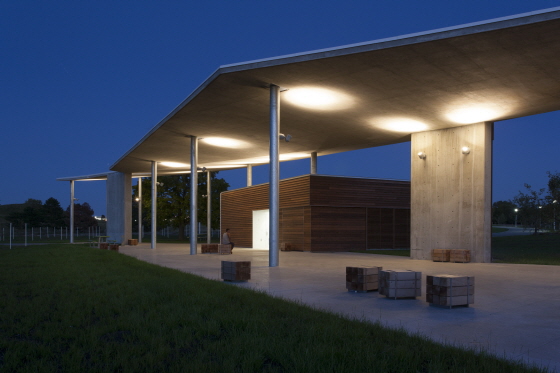
Orchard Pavilion & Rest Stop, Night View
과수원을 위한 휴게소, 야간 ©Downsview Park
- 공동글 _ 박명권 대표 · 그룹한어소시에이트
-
다른기사 보기
lafent@naver.com
- 공동글 _ 최이규 지소장 · 그룹한어소시에이트
-
다른기사 보기
lafent@naver.com
기획특집·연재기사
- · "안정적 공원운영? 민관파트너십 통한 예산확보로"
- · 주목할만한 조경가 12인_벤자민 돈스키
- · "정원디자인, 시간의 흐름을 따르는 연주"
- · 주목할만한 조경가 12인_피엣 우돌프
- · "디자인에서 진정성은 항상 중요해"
- · 주목할만한 조경가 12인_케빈 콘거
- · "옴스테드 디자인철학, 여전히 유효하다"
- · 주목할만한 조경가 12인_비톨드 립친스키
- · "건물을 넘어, 도시 규모로 확대되는 버티컬 가든"
- · 주목할만한 조경가 12인_패트릭 블랑
- · "걷기좋은 도시는 국가를 부유하게 만든다"
- · 주목할만한 조경가 12인_제프 스펙
- · 조경가 '키스 바우어스'와의 대담




















